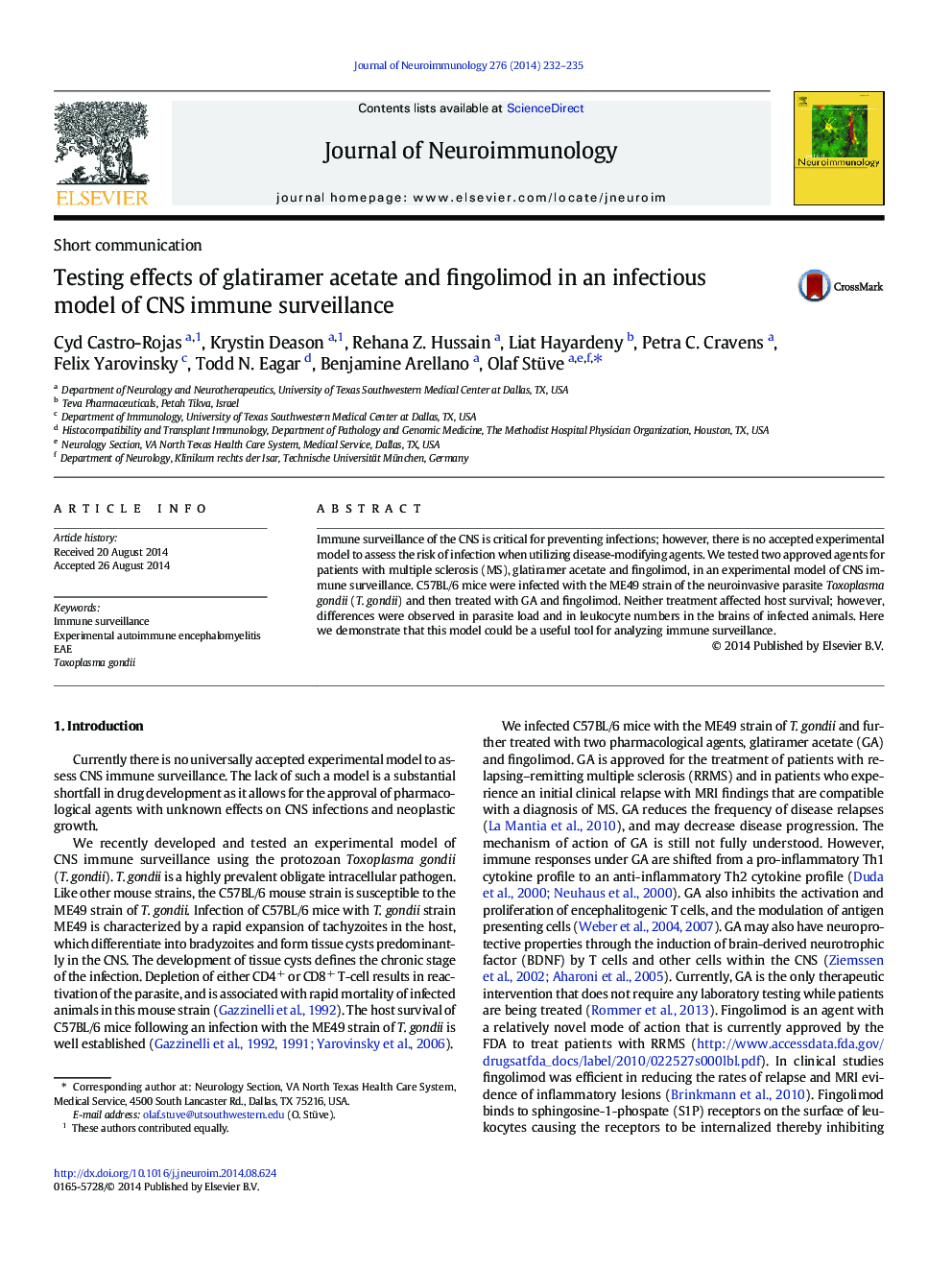| کد مقاله | کد نشریه | سال انتشار | مقاله انگلیسی | نسخه تمام متن |
|---|---|---|---|---|
| 3063997 | 1580398 | 2014 | 4 صفحه PDF | دانلود رایگان |

• Therapy of multiple sclerosis (MS) involves the reduction of immune-competent cells.
• Alternatively, cells are sequestered away from the target organ.
• An experimental model that evaluates CNS immunesurveillance is introduced.
• Glatiramer acetate and fingolimod have differential effects on key outcome.
• This model may become useful in pre-clinical testing of pharmacological agents.
Immune surveillance of the CNS is critical for preventing infections; however, there is no accepted experimental model to assess the risk of infection when utilizing disease-modifying agents. We tested two approved agents for patients with multiple sclerosis (MS), glatiramer acetate and fingolimod, in an experimental model of CNS immune surveillance. C57BL/6 mice were infected with the ME49 strain of the neuroinvasive parasite Toxoplasma gondii (T. gondii) and then treated with GA and fingolimod. Neither treatment affected host survival; however, differences were observed in parasite load and in leukocyte numbers in the brains of infected animals. Here we demonstrate that this model could be a useful tool for analyzing immune surveillance.
Journal: Journal of Neuroimmunology - Volume 276, Issues 1–2, 15 November 2014, Pages 232–235